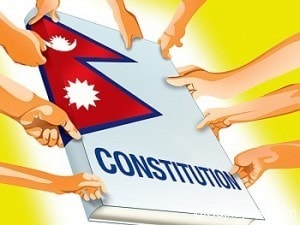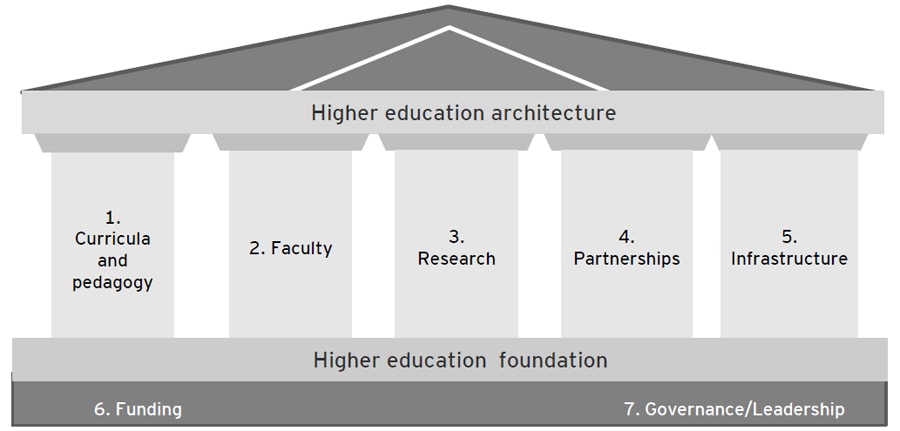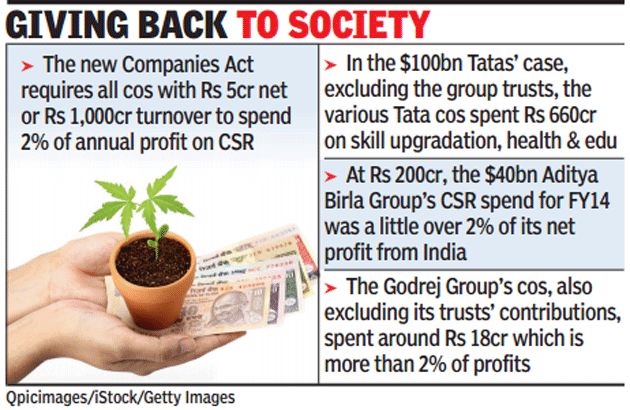IASbaba's Daily Current Affairs Analysis, IASbaba's Daily Current Affairs August 2015, International, National, UPSC
Archives
IASbaba’s Daily Current Affairs- 4th August, 2015
INTERNATIONAL
Constitutional Crisis: As Nepal fumbles with identity issues, an open threat of separatism raises new concerns.
Present Scenario:
- The continuing chaos and uncertainty, following the political failure to deliver the
 constitution and the resultant loss of credibility and authority of the state, have encouraged both separatist and anarchic tendencies.
constitution and the resultant loss of credibility and authority of the state, have encouraged both separatist and anarchic tendencies. - Amresh Kumar Singh, a CA member from the ruling Nepali Congress, has openly advocated for a separate country if they did not get the province they were demanding.
- Even the army has shown its displeasure, since the current draft of the constitution undermines its role and position in national security. Also other major institutions like the Supreme Court, election commission, the police have their reservations about the draft.
- While three of the four major parties, with the exception of the Maoists, have agreed to replace ‘secularism’ with ‘religious freedom’, they are divided over the suitability of a directly elected executive head.
- It’s now upto the constituent assembly to accept all these grievances within the two-week deadline that has been set for delivering the constitution.
Background:
- The preliminary draft copy of the new constitution of Nepal was tabled on July 2, 2015 in the Constituent Assembly (CA) as an outcome of the 16 point agreement among the four major political parties (Nepali congress, CPN-UML, UPCM(moist) and the Madeshi party )of Nepal .This had led to lot of political statements and public unrest regarding the makeup of Nepal constitution.
- The draft was tabled defying a court order and amid opposition from fringe parties, failure to reflect the interests of marginalized groups, including women, Madhesis, indigenous peoples, Dalits and religious minorities. The Supreme Court had stayed the implementation of it, citing that the 16 point agreement infringes on provisions of the interim constitution that require the CA itself to delineate and name the provinces in the future federal structure of Nepal.
Reasons for the Constitutional Logjam ?
- Division of Nepal – according to draft report Nepal will be divides into 8 states based on ethnic/communal, linguistic, cultural geographical/continuity of regional identity and continuity of historical identity and economic inter-relationship and capability, infrastructure development and potential, availability of natural means and resources and administrative accessibility. A committee would be set up to demarcate the country based on above lines.
However political parties like Moists and Madeshi want the state to be divided strictly on ethnic lines to maintain homogeneity in population.
- Presidential form of government or Parliamentary form – draft report talks about parliamentary form of government, even the ruling Nepali congress supports it. However the moist party headed by Prachanda backs Presidential form of government.
- Whether Nepal should be Hindu republic or remain secular – majority of population in Nepal are Hindus and are demanding for a Hindu state. Whether Nepal remains as Hindu republic or only republic, religious freedom for people is very important and should be the need of the hour.
- Issues with respect to judiciary–
- Presence of judicial council to appoint judges of Supreme Court.
- Supreme Court to submit annual report to President, which will be tabled in parliament.
- Presence of federal judicial service commission to look into matters of promotion and transfers of judges is another cause of concern.
- Issues related to third tier or local governments with governing from village councils and presence of judicial committee to supervise the same.
- Presence of Constitutional council to appoint heads and chairman of various democratic institutions like election commission, federal public service commission, auditor general etc. Constitutional council consists of prime minister, speaker of lower house, leader of opposition in lower house, chief justice and one women member among council of ministers.
Connecting the Dots:
- Amidst the current ongoing crisis, can monarchy be the solution to restore the balance between tradition and modernization in Nepal? What role can India play here?
- Does Nepal still treat India as its big brother?
- What are the current measures taken by India to build better relationship with Nepal? Are the measures on the right track?
NATIONAL
Swaraj in Academy: Is loss of Autonomy trapping Higher education?
- Nearly a decade ago, in 2006, the newly constituted National Knowledge Commission (NKC) had drawn attention to a “quiet crisis” in higher education. That was an understatement.
- The nation’s higher education sector was already broken by a long period of sustained and extreme political interference by state and national governments.
- It is not an exaggeration to use the word “broken” to describe the state of higher education.
- Worse still, with the exception of a handful of institutions (a few Central universities, the IITs, IIMs and a small number of other institutions), most colleges and universities are mediocre.

Is the damage of Higher education beyond repair?
- Since the National Knowledge Commission (NKC) called attention to a “quiet crisis” nearly a decade ago, we have seen a mix of feeble, unplanned and uncoordinated, incoherent, harmful, and occasionally even well-intentioned policies being considered and/ or implemented all evidently designed to improve higher education.
- Other than improvements in access to education, progress on other fronts, notably the quality of education, has been negligible.
- The government must step aside and not bully academic institutions into submission. Otherwise, all that it will achieve is further crushing our already broken higher education sector.
What are the Reasons for the current state of Higher Education?
- The reasons for this broken state are widely known. All through the 1980s and the 1990s, which merit being labelled as the “lost decades” for higher education, successive state and national governments completely marginalised the sector.
- Low spending combined with extreme forms of politicisation, widespread nepotism and corruption as well as the downgrading of the academic profession destroyed the sector.
- Since 2006, some things have changed for the better but the damage inflicted during the lost decades seems beyond repair.
What is Hindering the growth of Indian Universities?
- Consider the following irony. GIAN has been set up for our academics and students to “learn” best practices from US-based faculty.
- However, our government officials have as much to learn, from the Americans as well as from others, about how to run public universities. In the US, as in most countries around the world that have robust higher education sectors, public institutions are not government “controlled”.
- Ministers do not have the power to approve or reject the appointments of vice chancellors and directors.
- Our universities will not realize their full potential unless the government stops meddling in matters it has no business messing with.
IAS BABA’s View
- Our higher education community has generally failed to govern itself credibly vis-à-vis the production of knowledge.
- The bottom line is “Swaraj by all means, but it is what do you do with that that counts”.
- However, so much of our national resources are being poured into this segment, when it has valuable alternative uses, that we would be naive to ignore the outcome.
Connecting the Dots:
- How committed are the teachers in the mushrooming public universities to equipping our youth with the best in the world, a task involving high investment of time and effort?
- Do our Think Tanks aspire to build liberal and democratic spaces committed to producing innovative ideas for India?
ECONOMICS
CSR: Corporates Should Reach out
- The new Companies Act has made CSR a financial obligation, but it is still a secondary priority.
- Corporates have scrambled to meet their corporate social responsibility (CSR) obligations under the new Companies Act, 2013.
- This is not a surprise, as most companies have not regarded CSR as a business priority. The positive outcome is that the act has compelled introspection.

What is the new Companies Act, 2013?
- Companies Act, 2013 is an Act of the Parliament of India which regulates incorporation of a company, responsibilities of a company, directors, and dissolution of a company.
- The 2013 Act has introduced several new concepts and has also tried to streamline many of therequirements by introducing new definitions.
- The 2013 Act makes an effort to introduce the culture of corporate social responsibility (CSR) in Indian corporates by requiring companies to formulate a corporate social responsibility policy and at least incur a given minimum expenditure on social activities.
How CSR can contribute to profit, people and planet?
- As detailed in the Act, a company covered by the Act is required to establish a CSR committee, set CSR objectives, monitor CSR activities and report the same in their annual financial statements.
- If the company wishes, the activities can be performed through a foundation formed by the company specifically for this purpose.
- The Act specifies quite a few types of CSR activities, including those that encompass training, education, health, sanitation and environmental sustainability.
- Quite a few of them already spend more than the mandatory 2% of their net PBT on such activities.
What keeps companies from doing good?
- While reporting of the CSR spending in annual reports is mandatory and there are no specific penalties for not spending, the Act has certain general penalty provisions which the government could potentially invoke.
- Though the mandatory CSR norms may seem coercive in nature, the intention is to institutionalize philanthropy and bring in accountability.
- Gearing up for CSR spending would involve engaging with non-governmental organizations (NGOs) that undertake social, developmental and educational activities and/or form specialized foundations to do such tasks.
What are the Implementation Issues in CSR?
- Today, companies are not engaged with the beneficiary community.
- They provide money to build toilets, but they leave unaddressed the problem of locating the septic tank.
- They construct schools, but do little about enhancing the quality of education. They give money, but they have no understanding of the subculture of poverty.
- The result is that their contribution has had a limited impact.
How can companies overcome these issues?
- What they should do is take a holistic approach.
- They need to acknowledge that there is no silver bullet solution to the problems of poverty and that, while they have expertise, it is not of a breadth that can deliver end-to-end responses to these problems. What can make a difference are partnerships wherein the sum of the parts is greater than the whole.
- Take, for instance, a social enterprise between Wipro, NIIT, Larsen and Toubro (L&T) and Unilever. Each has specific domain knowledge, such as Wipro in technology, NIIT in education, L&T in engineering and project management; and Hindustan Unilever in marketing and distribution.
- Singly, these companies can make a meaningful and sustainable impact in their area of expertise alone.
- But together, given the complementarity of their assets, they can shift the needle systemically.
Connecting the Dots:
- Why there is considerable confusion on what qualifies as CSR-spend and what does not?
- Write a note on Section 8 company
- Do you think that CSR spending is unlikely to be adopted by companies in letter or in spirit?













